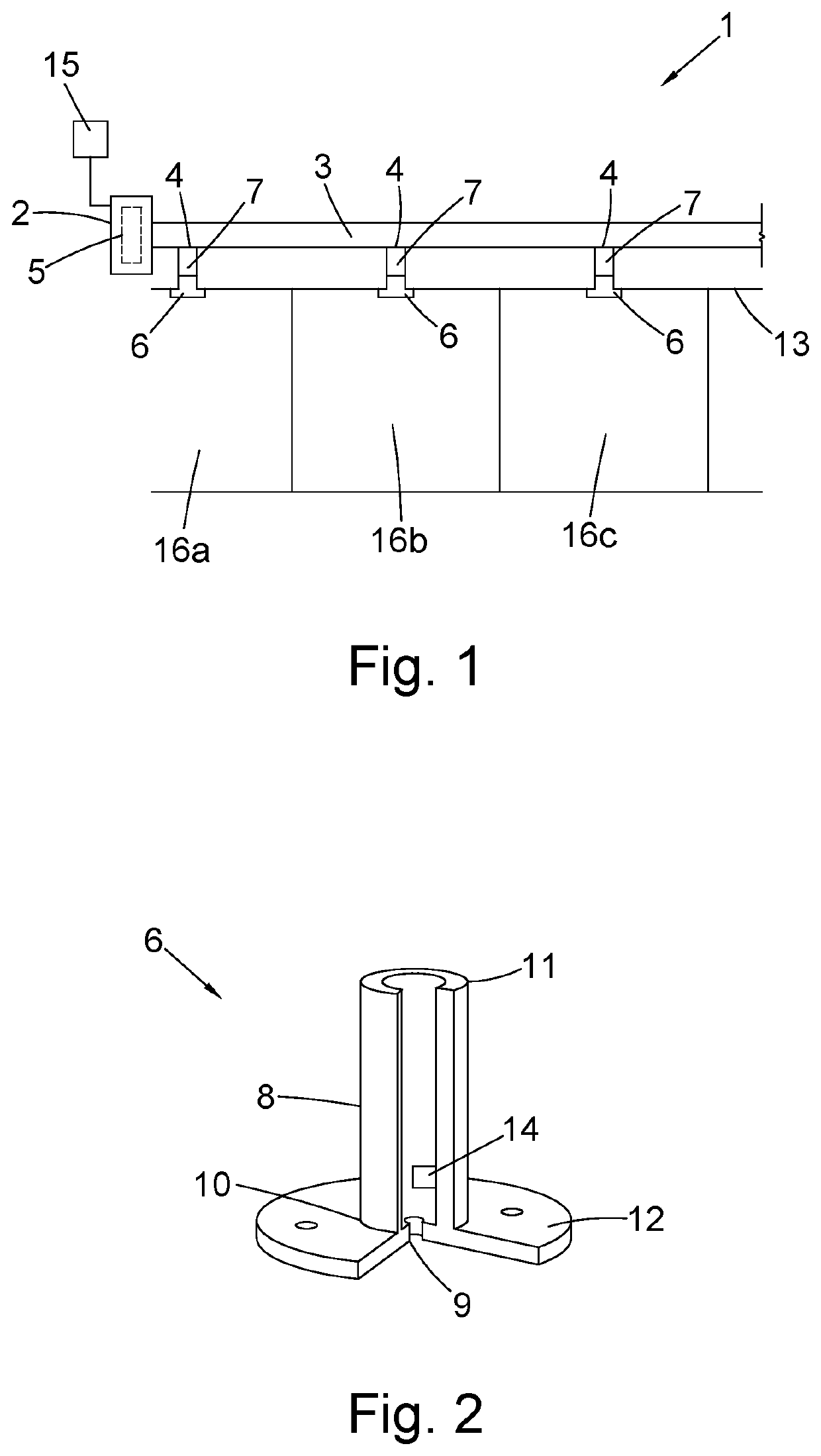Aspiration smoke detection system
a smoke detection and air intake technology, applied in the direction of fire alarm smoke/gas actuation, fire alarms, instruments, etc., can solve the problems of not enough smoke or heat to be detected by the local sensor, produce a small amount of smoke and/or heat, and produce enough smoke, so as to reduce the detection time, detect certain fires more quickly, and determine the location of fires more quickly
- Summary
- Abstract
- Description
- Claims
- Application Information
AI Technical Summary
Benefits of technology
Problems solved by technology
Method used
Image
Examples
Embodiment Construction
[0069]FIG. 1 shows an aspiration smoke detection system 1 capable of detecting the presence of a fire within a region of interest, for instance one or more rooms 16a, 16b, 16c of a building. The system 1 comprises a central detection unit 2 and a sampling pipe 3 extending from the central detection unit 2 for enabling air from the region of interest to be passed to the central detection unit 2. A fan, for example, may be used to draw air into the sampling pipe 3 from the region of interest and pass it to the central detection unit 2. In the exemplary embodiment in FIG. 1, the system 1 is shown located and arranged within a ceiling void above several rooms 16a, 16b, 16c in a building in order to detect smoke emanating from within one or more of the rooms 16a, 16b, 16c. However, the aspiration smoke detection system 1 may be used in any location to detect the presence of a fire in a region of interest.
[0070]The central detection unit 2 includes a sampling chamber 5 (shown by the dashe...
PUM
 Login to View More
Login to View More Abstract
Description
Claims
Application Information
 Login to View More
Login to View More - R&D
- Intellectual Property
- Life Sciences
- Materials
- Tech Scout
- Unparalleled Data Quality
- Higher Quality Content
- 60% Fewer Hallucinations
Browse by: Latest US Patents, China's latest patents, Technical Efficacy Thesaurus, Application Domain, Technology Topic, Popular Technical Reports.
© 2025 PatSnap. All rights reserved.Legal|Privacy policy|Modern Slavery Act Transparency Statement|Sitemap|About US| Contact US: help@patsnap.com

